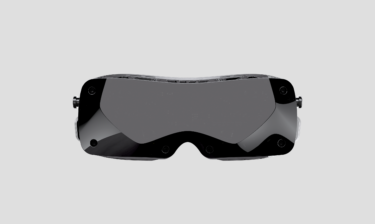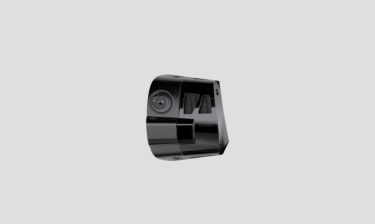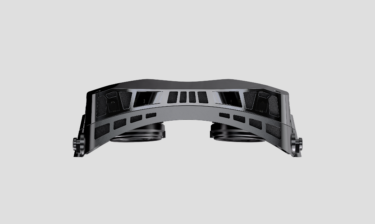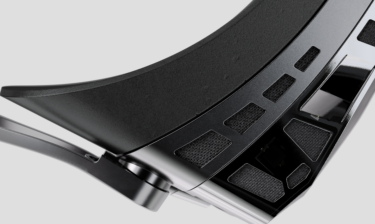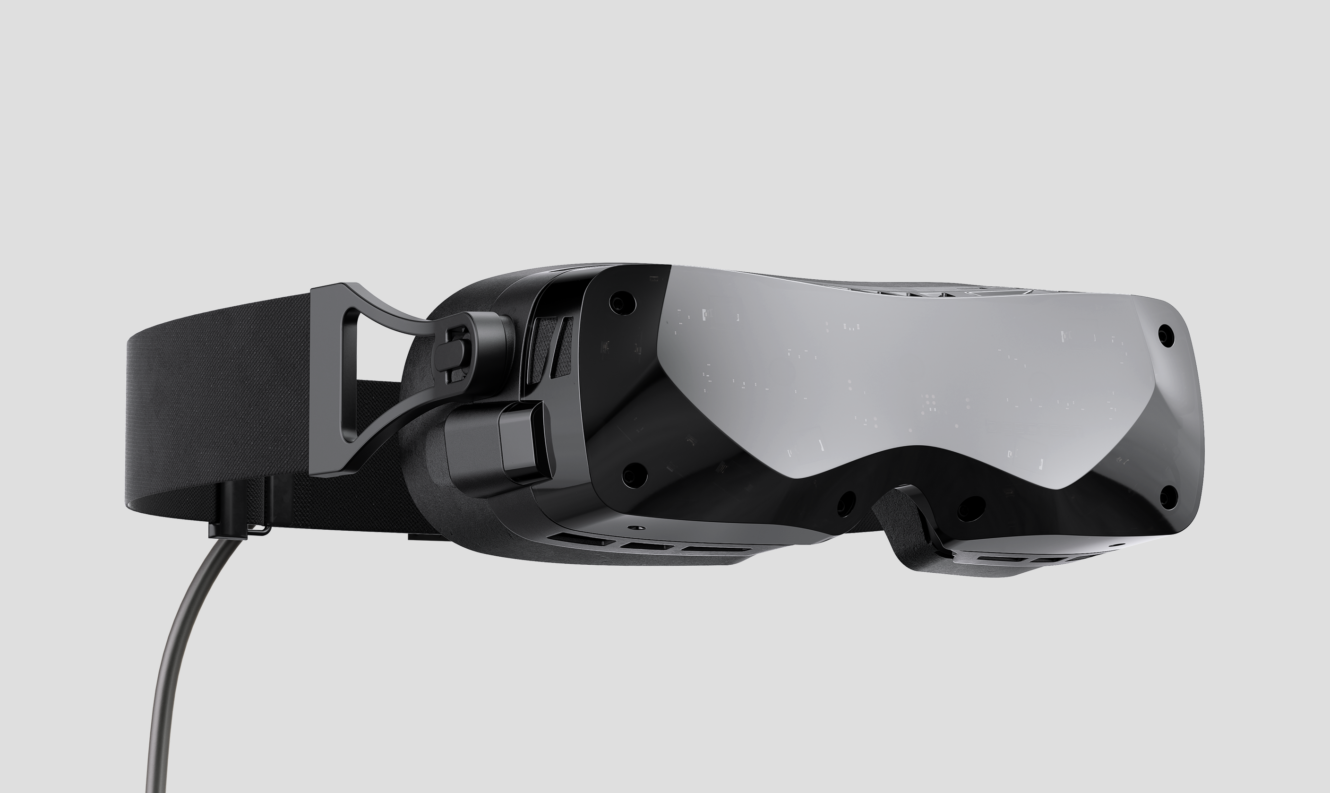
Bigscreen Beyond – The World’s Smallest VR Headset
Guess what? Bigscreen VR just launched its first virtual reality headset and it’s so tiny, you won’t even feel like you’re wearing it! Weighing in at only 127 grams or around 4.5 ounces, Beyond, the wired-only and PC-only headset, offers impressive specs such as OLED displays with 5120 x 2560 resolution, a refresh rate of up to 90Hz, and a range of customization options.
But that’s not all, this little guy also features pancake lenses that make the headset even lighter and thinner with “massively improved optical clarity” compared to other headsets that use Fresnel lenses, like the Valve Index. It even boasts a 90-degree field of view and built-in SteamVR tracking that’s compatible with SteamVR base stations, controllers, and accessories. And the best part? It supports all VR games on Steam, including Bigscreen’s own app where you can watch movies, play games, and hang out with friends in VR.
To make the experience even more comfortable, Bigscreen allows you to customize the face cushion by scanning an image of your face and uploading it to their app. You can even create additional custom face cushions for your friends, and add prescription lens inserts. Unfortunately, this feature is only available for iPhone XR or newer models.
Other exciting features of Beyond include stereo microphones, a proximity sensor for an immersive VR experience, and a USB-C port that lets you connect “a range of audio sources or other USB items”. And you have the option of choosing between two straps - an ultra-lightweight one designed for comfort, and one that comes with “high-end” audio.
If you’re excited about trying out Beyond, you can pre-order it today for $999. But keep in mind that it doesn’t come with the required SteamVR base stations or Valve Index controllers. Also, it doesn’t include the Tundra Tracker or HTC Vive Tracker that it recommends for full-body tracking. The device is set to start shipping in the third quarter of this year in the US, so get ready to experience VR like never before!
Where We Think VR Is Heading
As we look ahead to the future of virtual reality technology, it’s clear that we’re on the cusp of some truly exciting developments. From improved hardware to new applications, there’s no doubt that VR is going to play an increasingly important role in our lives in the coming years.
One of the biggest trends we can expect to see in the near future is the continued development of standalone VR devices. While early VR headsets were often tethered to a computer or gaming console, recent years have seen the emergence of devices like the Oculus Quest that offer full VR experiences without the need for external hardware. As these devices become more affordable and accessible, we can expect to see more people adopting VR technology in their homes.
Another exciting development is the use of VR in education and training. From medical simulations to industrial training programs, VR offers a safe and immersive way for learners to practice and hone their skills. As the technology continues to improve, we can expect to see more and more educational and training programs making use of VR to create more engaging and effective learning experiences.
We can also expect to see new applications of VR technology emerge in areas like art and design. Already, VR is being used to create stunning 3D models and immersive visual experiences that allow artists and designers to explore their work in new ways. As the technology continues to evolve, we can expect to see even more innovative uses of VR in the creative arts.
One area that is ripe for innovation is the use of VR in social settings. While early VR experiences were often solitary affairs, recent years have seen the emergence of social VR platforms like VRChat and Rec Room that allow users to interact with each other in virtual spaces. As these platforms become more sophisticated and user-friendly, we can expect to see more and more people using VR as a way to connect with others and form communities.
Of course, all of these developments depend on the continued advancement of VR hardware. As we look ahead to the next few years, we can expect to see major improvements in areas like resolution, field of view, and refresh rate. These improvements will help to make VR experiences even more immersive and lifelike, which in turn will drive adoption of the technology.
As an editor of PopMule, I’m excited to see where the technology will go in the coming years. While VR is still in its infancy, there’s no doubt that it has the potential to transform the way we live, work, and play. Whether you’re a gamer, an artist, a learner, or just someone who wants to connect with others, there’s a VR experience out there for you. So strap on your headset and get ready for the ride – the future of VR is going to be a wild one!
